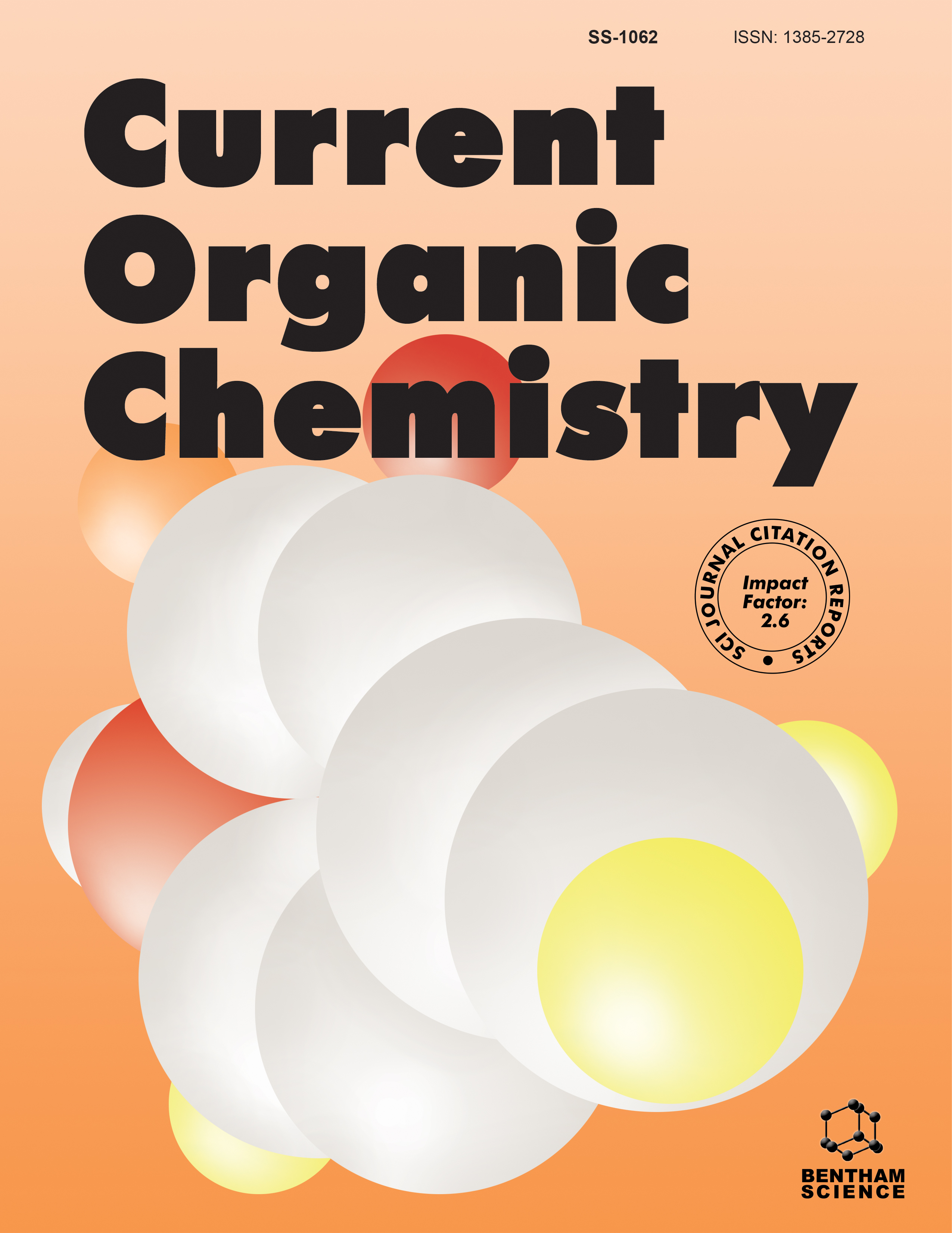- Home
- A-Z Publications
- Current Organic Chemistry
- Previous Issues
- Volume 15, Issue 23, 2011
Current Organic Chemistry - Volume 15, Issue 23, 2011
Volume 15, Issue 23, 2011
-
-
Progress in the Chemistry of Second Generation Hypericin Based Photosensitizers
More LessAuthors: Mario Waser and Heinz FalkIts outstanding ability to generate singlet oxygen or reactive oxygen species upon irradiation with light makes hypericin one of the most powerful photosensitizers to be found in Nature. The most important fields of application of hypericin seem presently to be its use as a photosensitizing antiviral agent to destroy virus particles in blood preparations, to sensitize the destruction of superficial tumors, and its use as a diagnos Read More
-
-
-
The Boron Imprint into Combined Catalytic Organic Reactions
More LessAuthors: Amadeu Bonet, Henrik Gulyas and Elena FernandezCombined reactions through organoboron intermediates belong to the class of sequential reactions whereby the advantages are clear in terms of efficiency and selectivity. The goal to prepare target molecules from simple substrates requires strategic steps and very selective formation of new bonds. The addition of boryl units to unsaturated substrates can be performed chemo-, regio- and stereoselectively, therefore the organ Read More
-
-
-
Nafion-Silica Nanocomposites: A New Generation of Water-Tolerant Solid Acids of High Efficiency—An Update
More LessBy Arpad MolnarThe methods to prepare Nafion materials with significantly improved specific activities, their characterization and applications as useful and efficient catalysts are summarized. The sol-gel technique used most widely, covalent anchoring of the sulfonic acid group to the surface via a perfluoroalkane tether via post-synthesis modification, impregnation of high-porosity spinodal silica and mesoporous silica materials, an Read More
-
-
-
Zirconia-Based Solid Acids: Green and Heterogeneous Catalysts for Organic Synthesis
More LessAuthors: Meghshyam K. Patil, Avvari N. Prasad and Benjaram M. ReddyThis review highlights the application of sulfated, molybdated and tungstated zirconia solid acid catalysts, and their modified forms for variety of organic synthesis and transformation reactions in the liquid phase. Most of these catalysts offer significant improvements in various organic reactions with regard to the yield of products, simplicity in the operation, reusability of the catalysts and green features by avoiding toxi Read More
-
-
-
Preparation of Stabilized Phosphorus Ylides via Multicomponent Reactions and Their Synthetic Applications
More LessAuthors: Ali Ramazani and Ali Reza KazemizadehTriphenylphosphine (TPP), dialkyl acetylenedicarboxylates (DAAD), and acids such as phenols, imides, amides, enols, oximes and alcohols react with each other via a multicomponent reaction to produce stabilized phosphorus ylides. The reactions take place easily, through formation of intermediate formed by the Michael addition of the triphenylphosphine to dialkyl acetylenedicarboxylates and concomitant protonation o Read More
-
Volumes & issues
-
Volume 29 (2025)
-
Volume 28 (2024)
-
Volume 27 (2023)
-
Volume 26 (2022)
-
Volume 25 (2021)
-
Volume 24 (2020)
-
Volume 23 (2019)
-
Volume 22 (2018)
-
Volume 21 (2017)
-
Volume 20 (2016)
-
Volume 19 (2015)
-
Volume 18 (2014)
-
Volume 17 (2013)
-
Volume 16 (2012)
-
Volume 15 (2011)
-
Volume 14 (2010)
-
Volume 13 (2009)
-
Volume 12 (2008)
-
Volume 11 (2007)
-
Volume 10 (2006)
-
Volume 9 (2005)
-
Volume 8 (2004)
-
Volume 7 (2003)
-
Volume 6 (2002)
-
Volume 5 (2001)
-
Volume 4 (2000)
Most Read This Month
Article
content/journals/coc
Journal
10
5
false
en


